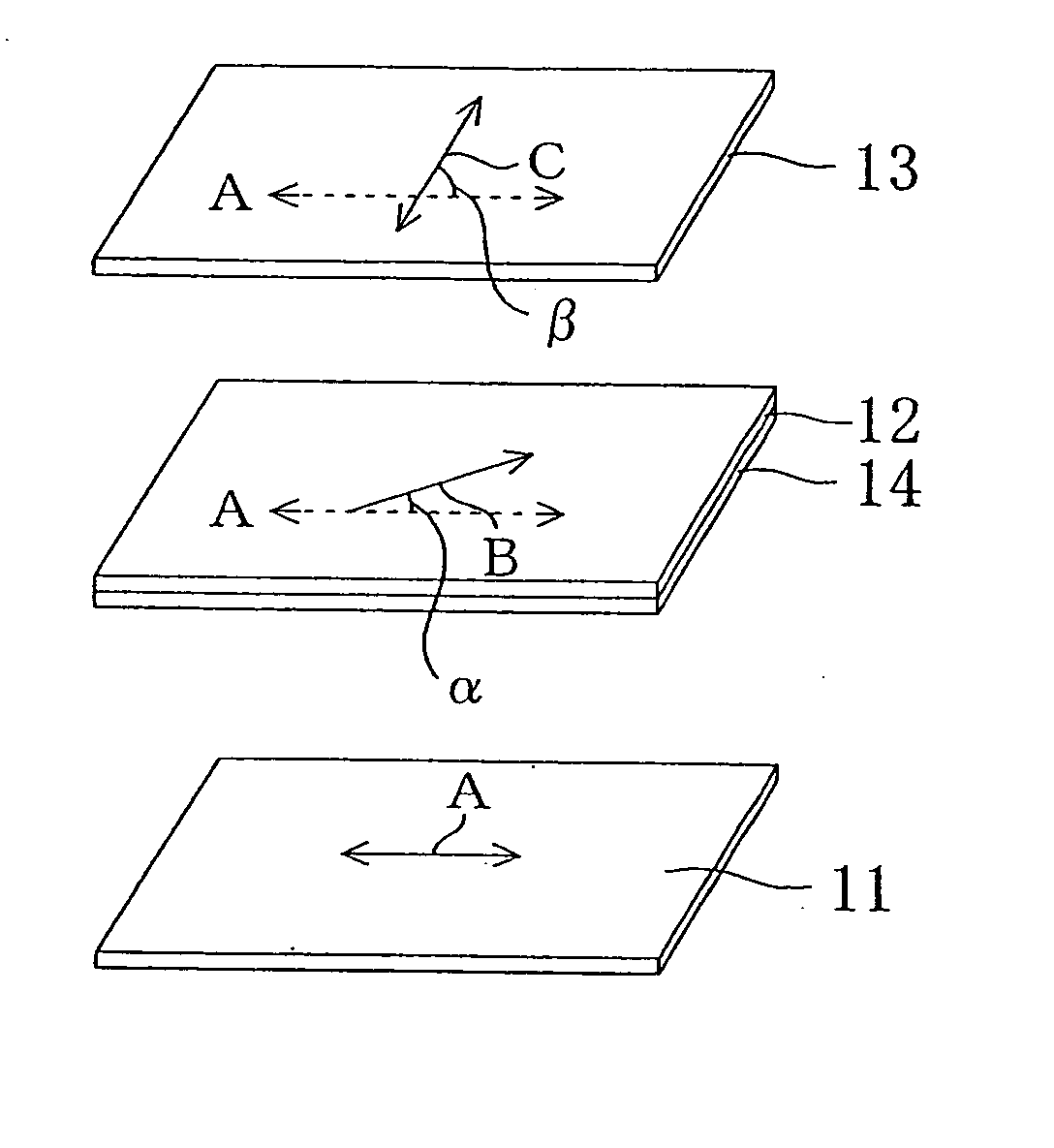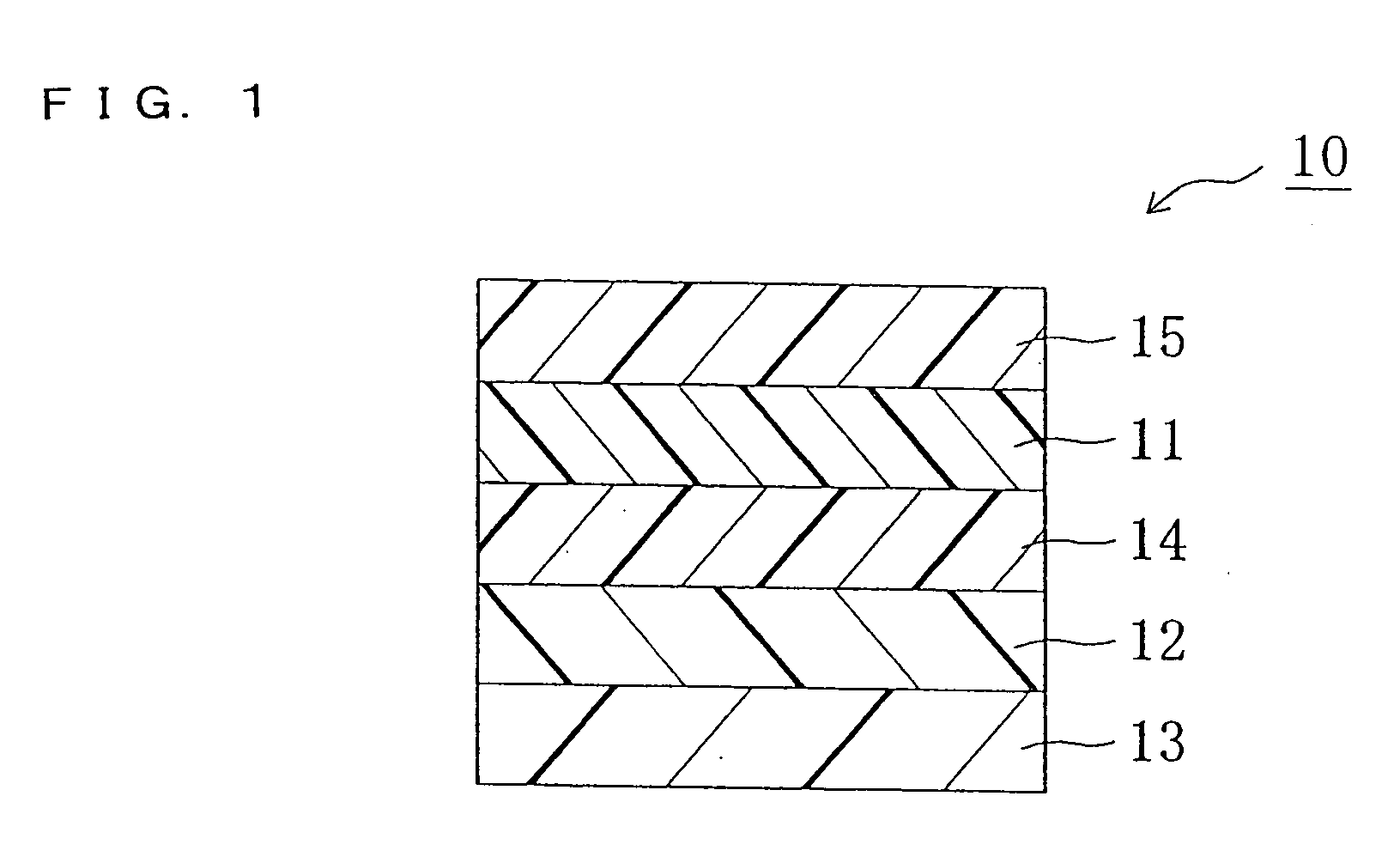Method of producing elliptically polarizing plate and image display using the elliptically polarizing plate
a technology applied in the field of elliptically polarizing plates and image displays, can solve the problems of film quality variation, high cost and long time, and inability to exhibit the desired optical characteristics (such as the functions of /4 plates) over a wide wavelength range, and achieve low cost, no waste, and high production efficiency
- Summary
- Abstract
- Description
- Claims
- Application Information
AI Technical Summary
Benefits of technology
Problems solved by technology
Method used
Image
Examples
example 1
I. Preparation of Elliptically Polarizing Plate as Shown in FIG.
I-a. Alignment Treatment for transparent Protective Film (Preparation of Alignment Substrate)
[0117] Transparent protective films were subjected to alignment treatment, to thereby prepare alignment substrates (eventually, protective layers).
[0118] Substrates (1) to (8): A PVA film (thickness of 0.1 μm) was formed on a surface of a TAC film (thickness of 40 μm). Then, the surface of the PVA film was subjected to rubbing at a rubbing angle shown in Table 1 by using a rubbing cloth, to thereby form each of alignment substrates.
[0119] Substrates (9) and (10): A TAC film (thickness of 40 μm) was subjected to rubbing at a rubbing angle shown in Table 1 by using a rubbing cloth, to thereby form each of alignment substrates.
[0120] Substrates (11) and (12): A silane coupling agent (KBM-503, trade name; available from Shin-Etsu Silicones) was applied onto a surface of a TAC film (thickness of 40 μm). The surface of the sila...
example 2
[0127] The elliptically polarizing plates A01 were superimposed to measure a contrast ratio. Table 5 reveals that the elliptically polarizing plate had a relationship represented by an expression β=2α+44°. The elliptically polarizing plate had the minimum angle of 40° and maximum angle of 50° for contrast 10 in all directions, and a difference between the maximum and minimum angles of 10°. The minimum angle of 40° for contrast 10 in all directions was at a preferred level in practical use. Further, the difference between the maximum and minimum angles of 10° was small and was also at a very preferred level in practical use, and thus the elliptically polarizing plate had balanced visual characteristics.
example 3
[0128] The elliptically polarizing plates A21 were superimposed to measure a contrast ratio. Table 5 reveals that the elliptically polarizing plate had a relationship represented by an expression β=2α+49°. The elliptically polarizing plate had the minimum angle of 40° and maximum angle of 60° for contrast 10 in all directions, and a difference between the maximum and minimum angles of 20°. The minimum angle of 40° for contrast 10 in all directions was at a preferred level in practical use.
PUM
| Property | Measurement | Unit |
|---|---|---|
| angle | aaaaa | aaaaa |
| angle | aaaaa | aaaaa |
| angle | aaaaa | aaaaa |
Abstract
Description
Claims
Application Information
 Login to View More
Login to View More - R&D
- Intellectual Property
- Life Sciences
- Materials
- Tech Scout
- Unparalleled Data Quality
- Higher Quality Content
- 60% Fewer Hallucinations
Browse by: Latest US Patents, China's latest patents, Technical Efficacy Thesaurus, Application Domain, Technology Topic, Popular Technical Reports.
© 2025 PatSnap. All rights reserved.Legal|Privacy policy|Modern Slavery Act Transparency Statement|Sitemap|About US| Contact US: help@patsnap.com



